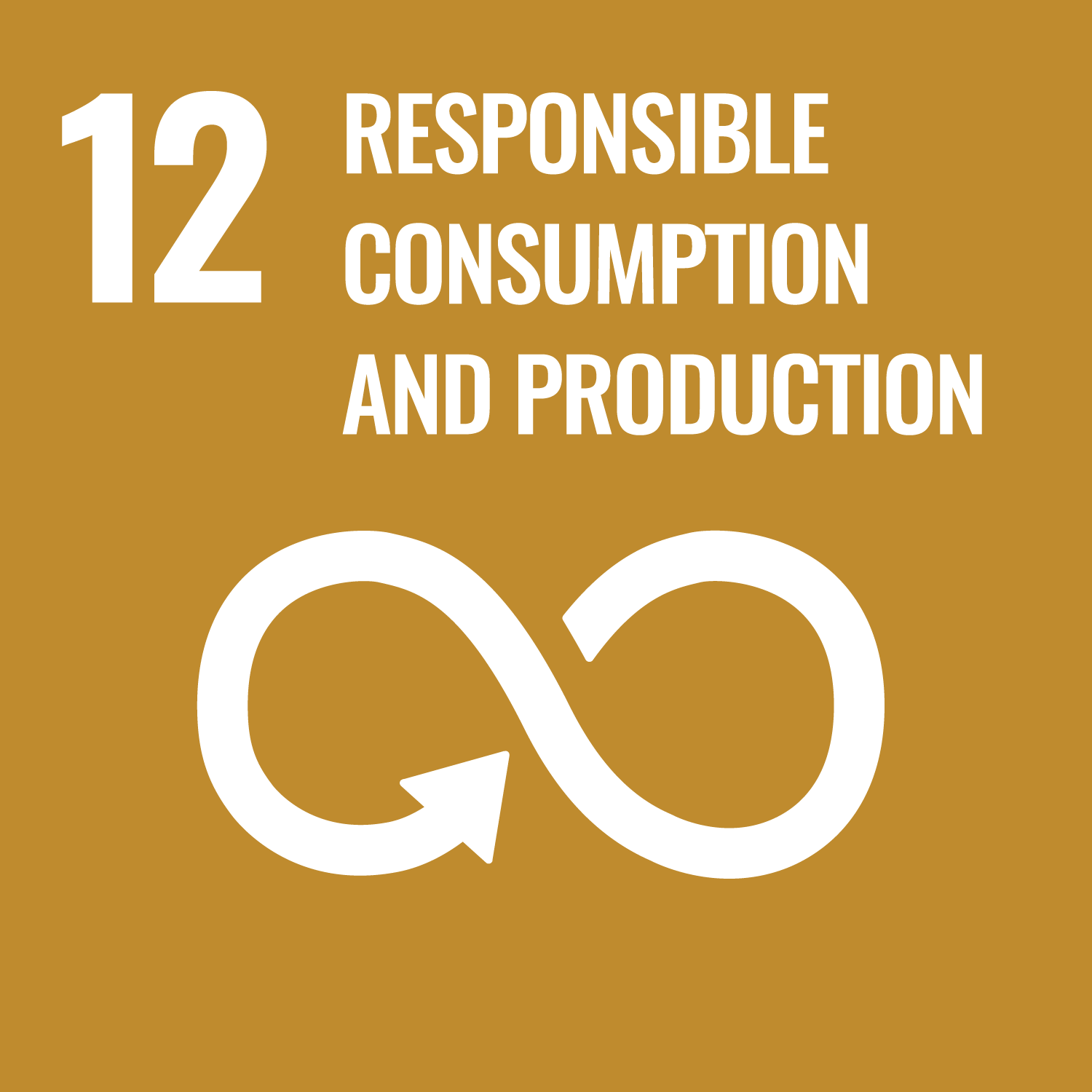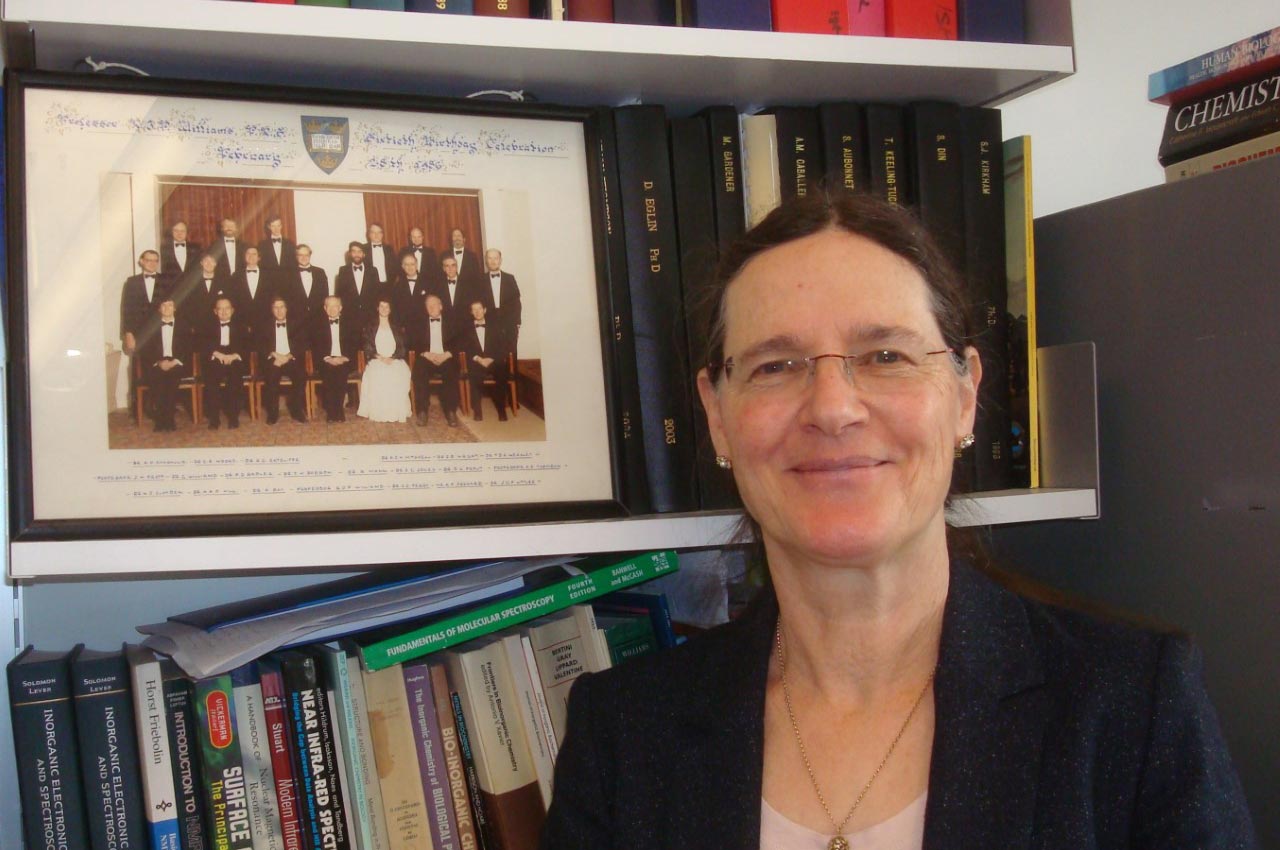Role
Professor Perry is responsible for oversight of research within the Chemistry and Forensic Science team; she supervises undergraduate projects in chemistry and forensics and postgraduate (Masters level and PhD) in chemistry and bioscience at its interface with chemistry.
Professor Perry is a research associate at Harvard University.
Professor Perry was a Wolfson Research Merit awardee from 2013-2017.
Career overview
Education:
- BA, MA and DPhil, Somerville College Oxford.
- D.Phil Award date: 1985; Inorganic Chemistry Laboratory, University of Oxford, UK. Supervisor Professor R.J.P. Williams FRS.
Academic Positions:
- Nottingham Trent University, Senior Lecturer (1993-2000), Reader (2000-2003), Professor (2003-2017), Head of Department (2003-2008), Distinguished Professor (2017-)
- Brunel University, Lecturer (1987-1993)
- Oxford University, St Hilda’s College (1985-1987) E.P.A. Brereton Sherman Junior Research Fellowship
Visiting Professorships:
- Université Pierre et Marie Curie and College de France (2002)
- Karlsruhe Institute of Technology (2012 and 2013)
- Institute of Lasers Photonics and Biophotonics, SUNY University at Buffalo (2010-2013)
- Mercator Fellow (DFG) University of Bremen and Stuttgart University (2019-2022)
External Competitive fellowships:
- Edward, Frances, and Shirley B. Daniels Fellow and Wyss Fellow, Radcliffe Institute for Advanced Study, Harvard University (2012-2013)
- Israeli Ministry of Science and Technology (1992 Weizmann Institute, Israel)
- Royal Society (1991-1992 Weizmann Institute, Israel)
- CIBA Foundation (1986 Scripps Institute, San Diego, USA).
Named Lectureships:
- RIG Lectureship (Cambridge) 2015
Institutional Responsibilities:
SST research committee; MTIF, IMEC and Unit of assessment steering committees.
Research areas
Professor Perry is Head of the Biomolecular Materials Interface Research Group.
Research Fellows:
- Dr Ayesha Sadaf
- Rajeharish Rajendran
Research Assistants:
- Dilani Chathumalee Manchanayaka Arachchige Dona
- Tarang Trambadiya
Lab Manager:
- Dr Xin Zhang
Research Students:
- Dooshima Nevkaa
- Juwon Afolayan
- Rajeharish Rajendran (DOS: David Boocock)
- Katie Yates (DOS: Emily Burton)
- Sumaira Kousar (DOS: Valeria Puddu)
- Hanlin Jiang (DOS: Xianfeng Chen)
Visitors:
We regularly host visitors from around the world for visits from a few days to several months, a year and longer.
- Sarah Ell Hajj (2021: University of Lorraine, as part of the drEAM project) working on peptide:metal surface interactions
- Morgane Margottin (2023: Université Paris) working on ‘Si’ as an essential element in bone formation.
Current areas of research
Professor Perry's research is focussed towards understanding what happens at the interface between biomolecules and materials and how this affects properties, including:
- Inspiration from fungi: Generating tuneable mycelial networks for directed assembly (AFOSR). We use fungi to develop engineered living materials (ELM). We study fungi, and in particular their mycelia to (1) understand how living networks form and the role of the local environment on their biochemistry, structure and physico-chemical/ mechanical properties, and (2) use the materials developed in (1) to fabricate novel bio-inorganic mesoscale composites. Applications include materials for light sensing and next generation antimicrobials. A recent publication highlights how Raman microscopy can be used to track maturity of melanin, used to protect living fungus. https://doi.org/10.1039/D2RA06439A
- A materials chemistry approach to investigate the 5th state of matter (AFOSR). We have recently shown that spherical microcrystalline semi-conducting ZnO can be used to generate the 5th state of matter at room temperature (doi.org/10.1038/s41467-020-18666-4). We are investigating synthesis conditions for a range of semiconductor particles that should exhibit the same properties as ZnO and developing our understanding of the conditions required to stimulate Bose Einstein Condensation (BEC) behaviour.
- The study of abiotic biotic interactions at the molecular level (AFOSR and EPSRC). We use peptides identified by phage display to modify materials properties. We study a range of inorganic materials including Metal Organic framework (MOFs) materials, oxides (titania, silica, zinc oxide, germania) and metals (gold) (doi.org/10.1021/acs.chemrev.7b00660) We identify structural features of the polypeptides that bind and study how their presence modifies the structural and electronic properties of the materials formed (doi.org/10.1039/C8CP07011C); (doi.org/10.1021/cm5026987). We use a combination of experimental tools (doi.org/10.1021/acs.chemrev.7b00660) and computational (MD and DFT) approaches to understand effects on materials chemistry and binding at the atomistic level. The end goal is to produce a set of rules that can be used predictively with a wide range of materials.
- Development of new tools to understand the biotic-biotic interface (AFOSR and DFG). We have developed a new approach to studying surface charge on silica particles (doi.org/10.1039/C5CP05105C) and a new optical indicator displacement assay (OIDA) to measure the energetics of interaction of amino acids, drugs and other small molecules with mineral surfaces in aqueous and non-aqueous environments (doi.org/10.1021/acs.langmuir.9b03085). Current research is directed towards understanding how polypeptides interact with ZnO and the measurement of silica chemistry within living organisms.
- New routes to peptide conjugates (with Dr Warren Cross and Dr Pat Huddleston) (AFOSR). We develop C-H functionalization routes to peptides (doi.org/10.1021/acs.orglett.9b02894) and new light sensitive molecules (doi.org/10.1039/C8CP06059B).
- Silk-silica materials for bone repair (NIH and EPSRC). We study chimeric fusion proteins based on cocoon and spider silk for application in bone repair (doi.org/10.1002/adfm.201702570). We explore the link between structure and function at the atomistic level (doi.org/10.1021/acs.biomac.5b01246.)
- New Antimicrobials. We are developing novel nanoparticle antibiotic conjugates (doi.org/10.1039/c0jm00817f) using silk and fungal mycelium supports.
- New surfaces for biomedical use. Fundamental studies of surfaces and an exploration of how proteins and cells behave on surfaces as the first stage in the development of new materials for studying tumours (doi.org/10.1021/acsabm.9b00940).
- The role of Silicon in Life. Development of a soluble silicon supplement (patent EP 2268161B1) that improves bone health in chickens (doi.org/10.1038/s41598-018-35292-9).
Opportunities to carry out postgraduate research towards an MPhil /PhD exist in all the areas identified above. Further information may be obtained on the NTU Research Degrees website.
External activity
Commissions of Trust
- Royal Society of Chemistry. Fellow and chartered chemist (FRSC, CCHEM), elected Council member and trustee (2007-2011), Chair of audit committee (2009-2011), Disciplinary committee member (2011-2017), member research fund committee (2013-2015)
- UK Heads of Chemistry. Chair (2009-2011), member of steering committee (2005-2012)
- Royal Society. member of Newton Fund fellowship committee (2016-2018)
- Ramsay Trust, advisory council member (2019-)
- EPSRC. Member of the College of Referees (2003-), Panel member NSF Materials (2007)
- Harvard University. Final Selection Panel Radcliffe Fellowships, Science and Math 2016-2019
- DFG Research Council. Panel member for centres of excellence and Priority Calls (2005, 2006, 2011, 2013, 2015, 2017, 2021)
Other Activities
- Editorial Board Member: Nature Scientific Reports (2012-); Silicon (2010-); Recent Patents in Nanotechnology (2006-)
- Company director- SiActive (2009-)
- Fellow of Royal Microscopical Society (FRMS)
- Key involvement in the successful application to HEFCE for 'Chemistry the Next Generation' (2005) and 'Chemistry for our Future' (2006).
Sponsors and collaborators
Current and recent research is being conducted with the collaboration, funding and / or support of:
- Engineering and Physical Sciences Research Council
- Technology Strategy Board
- European Union (fifth and sixth Framework, INTAS)
- The American Airforce
- National Institutes of Health
- Royal Society
- QinetiQ
- Smith and Nephew
- Unilever
- UK Sport
- Ineos Chemicals
- The World Gold Council
- Biotage
Current university collaborations include Southampton University, Nottingham University, Bremen and Stuttgart Universities, Tufts University, USA, MIT, USA, Harvard University, USA, University of Colorado-Boulder, USA.
Research funding in the period since 2007 includes:
- AFOSR: FA9550-20-1-0206 Inspiration from fungi: generating tuneable mycelial networks for directed assembly ($591,000) (2020)
- ABVista (Emily Burton PI), funds for 2s PhD students studying the role of silicon in chicken leg health (£260,000) (2019 and 2016)
- EPSRC: EP/N026071/1 Exploring the MOF-peptide interface: from phage display to materials synthesis, thin films and composites £252,000 with D. Bradshaw, Southampton, (£370,000) Hendrik Heinz, Boulder and Andreas Tefort, Frankfurt (2016)
- AFOSR: FA9550-16-1-0213) Probing Mechanisms of Biological-Materials Interactions; towards realizing biomimetic materials by understanding molecular-level interactions ($510,000) (2016)
- British Council/ Mexican Government “Generating high value products form Mexican Horsetail for Biotech Applications” (2015-2016) £50,000
- Innovate UK “Recovery and Processing of High Value Food and Pharmaceutical Ingredients from Waste Egg Shells” (2016-2017) 800k project £147,000 to NTU
- AFOSR funds for purchase of Raman spectrometer (2014) $116,400.
- Extracting high value products from egg shells TSB- Food for life (2014-2015) £55,000
- NIH ca. Development of silk-silica nanocomposites for dental and bone repair (with Tufts University) 2013-2017 $440,000
- AFOSR: FA9550-13-1-0040 Computational and experimental studies of the abiotic-biotic interface (2013-2015) 510,000$
- Deriving value from egg shell waste (TSB) 2012-2013 £25000
- Sharp Industries “synthesis of vanadia coated silica nanoparticles” (2012) £10,000
- AbVista “stabilisation of novel silicon supplement” coI, (2011) £13,500
- Biotage “study of SLE materials and wettability” (2011-2013) £120,000
- World Gold Council “Technological developments involving antibiotics and gold” (2011-2012) £65,000
- Towards an understanding of Peptide-mineral interaction: a predictive approach, C C Perry, AFOSR (US Airforce) (2009 to 2012), £283,333
- Biomineralisation, C C Perry, Marie Curie Training Network (2008 to 2012), £227,929
- Silica-protein nanocomposites for dental repair, D L Kaplan, C C Perry, B Rutherford, NIH (2007 to 2012), $445,230
- A novel approach to nanoscale materials assembly using bioengineered spider silk fusion proteins: a generic approach, C C Perry, EPSRC EP/E048439/1 (2007 to 2010), £268,248
- Studies of Osseointegration, C C Perry, Smith and Nephew (2005 to 2010), £34,156
- Synthetic models for biosilicification, C C Perry, V A Annenkov, Limnological Institute, Irkutsk and others from the University of Helsinki and Institute of Physics and Combustion EU/INTAS (2007 to 2009), £5,953
- Studies of biosilicification and peptide mineral interactions, C C Perry, AFOSR (2006 to 2009), £250,000
- Biomineralisation for lithography and microelectronics (Biolitho), C C Perry, EU 6th Framework (2006 to 2009), £133,273
- Drag reduction and slip at solid-liquid interfaces, G McHale, C C Perry, M I Newton, EPSRC EP/D500826/1 (2005 to 2009) £205,498
- Enhancing Water Sports Performance, G McHale, C C Perry and M I Newton EPSRC EP/E043097/1 (2007 to 2008), £110,369
- New biomimetic synthetic polymers and organic-inorganic nanocomposites, C C Perry, Royal Society Joint Project Award (2006 to 2008), £12,000
- Mechanism of antiperspirant action of aluminium salts, C C Perry, Unilever (2004 to 2008), £65,930
- Studies of aluminium species in polymeric systems, C C Perry, Unilever (2006 to 2007), £48,000
- Studies on antiperspirant actives, C C Perry, Unilever (2002 to 2007), £300,500
- Oxide core shell particles, C C Perry, Qinetiq (2007), £20,000
Publications
Volkov, V.V., Sadaf, A. and Perry, C.C. (2023) Raman microscopy tracks maturity of melanin intermediates in Botrytis cinerea, a plant pathogen RSC Advances13(2) 1381-1391.
V.V. Volkov, T.J. Blundell, S.P. Argent and C.C. Perry (2023) Quantitative Raman Microscopy to describe structural organisation in hollow microcrystals built from silicon catecholate and amines. Dalton Trans., 2023, 52, 7249-7257.
M. Michaelis, L. Cupellini, C. Mensch, C.C. Perry, M. Delle-Piane, L. Colombi (2023) Tidying up the conformational ensemble of a disordered peptide by computational prediction of spectroscopic fingerprints. Chem. Sci. DOI 10.1039/D3SC02202A
M. Nurhuda, Y. Hafidh, C. Dogan, D. Packwood, C. C. Perry and M. A. Addicoat, 2023. Functional Group Pair Distance based Descriptor for Isomerisation in Porous Molecular Framework Materials Inorg. Chem. Front., 2023, DOI: 10.1039/D3QI01065A.
D J Oliver, V V Volkov and C C Perry (2023) Solid state Excitation-Emission Spectroscopy for the Non-Destructive Analysis of Band-gap & Defect States in Inorganic and Organic Semiconductors Materials Interface Science, 10(3) 2202048.
V.V. Volkov, J. McMaster and C.C. Perry (2022) Mapping blood biochemistry by Raman Spectroscopy at the cellular level. RSC Chemical Science. DOI: 10.1039/d1sc05764b
Volkov, V.V., Chelli, R and Perry, C.C. (2022) Cu(Proline)2 complex: a model of bio-copper structural ambivalence Molecules 27, 5846 (17 pg) https://doi.org/10.3390/molecules27185846
M. Nurhuda, C.C. Perry, M.A Addicoat, (2022) Performance of GFN1-xTB for periodic optimization of metal organic frameworks PCCP https://doi.org/10.1039/D2CP00184E
Perry C.C. (2022) Silica in ELS in press
M. Parambath, A.Fayyaz, I. Efimov, Q. S. Hanley, C. C. Perry (2022) A ratiometric, fluorometric approach for the Surface charge mapping of biosilica features, Analyst, 147, 5586-5594.
Michaelis, Monika; Delle Piane, Massimo; Rothenstein, Dirk; Perry, Carole; Colombi Ciacchi, Lucio (2021) "Lessons from a challenging system: accurate adsorption free energies at the amino acid / ZnO interface" Journal of Chemical Theory and Computation. https://doi.org/10.1021/acs.jctc.1c00165
V.V. Volkov, H. Heinz and C.C. Perry (2021) Anchoring of a hydrophobic heptapeptide (AFILPTG) on silica facilitates peptide unfolding at the abiotic-biotic interface PCCP https://doi.org/10.1039/d1cp02072b
V.V. Volkov and C.C. Perry (2021) Fungal pigments on paper: Raman and Quantum Chemistry studies of Alternaria Sp. Dyes and Pigments doi.org/10.1016/dyepig.2021.109719.
D.J. Oliver, V.V. Volkov and C.C. Perry (2021) ZnO Nano-gold Doping: A Bioinorganic Paradigm for Sensing and Optical Security Applications (2021) Journal: ACS Applied Nano Materials DOI:10.1021/acsanm.1c03805
Zhifeng Kuang, Kristi M. Singh, Daniel J. Oliver, Patrick B. Dennis, Carole C. Perry and Rajesh R. Naik (2020) Gamma Estimator of Jarzynski Equality for Recovering Binding Energies from Noisy Dynamic Data Sets Nature Commun 11: 5517 doi.org/10.1038/s41467-020-19233-
Burton EJ, Scholey DV, Belton DJ, Bedford M and Perry CC (2020) Efficacy and stability of a novel silica supplement for improving bone development in broilers . J British Poultry Science doi.org/10.1080/00071668.2020.1799328
Volkov VV, Oliver, DJ and Perry CC (2020) Polariton condensation and surface enhanced Raman in ZnO microspheres Nature Commun. 10.1038/s41467-020-18666-4
Nicklin, M, Hickman GJ, Pockley AG and Perry CC (2020) A materials-based approach for interrogating human prostate cancer cell adhesion and migratory potential using a fluoroalkylsilica (FS) culture surface ACS Applied Biomaterials 3, 495-504
Volkov, VV, Chelli, R, Righini, R, Perry, CC (2020) Indigo Chromophores and Pigments: structure and Dynamics. Dyes and Pigments. https://doi.org/10.1016/j.dyepig.2019.107761
El hadad, AA, Garcia-Galvan, FR, Mezour, MA, Hickman, GJ, Soliman, IE, Barranco, V, Galvan JC, Perry CC (2019) Organic-inorganic hybrid coatings containing phosphorus precursors prepared by sol–gel on Ti6Al4V alloy: Electrochemical and in-vitro biocompatibility evaluation. Prog. Org. Coat. 148, 105834
Michaelis, M, Fayyaz, A, Parambath, M, Koeppen, S, Colombi-Ciacchi L, Hanley QS, Perry CC (2019) A platform for screening abiotic/ biotic interactions using indicator displacement assays. Langmuir 35,44, 14230-14237 https://doi.org/10.1021/acs.langmuir.9b03085
Tilburey, GE, Blundell, TJ, Argent, SP, Perry CC. (2019) Azamacrocycles and tertiary amines can be used to form size tuneable hollow structures or monodisperse oxide nanoparticles depending on the ‘M’ source Dalton Transactions 48, 15470-15479
Volkov, V.V., Hickman, G.J., Sola-Rabada, A., Perry, C.C. (2019) Distributions of silica and biopolymer structural components in the spore elater of Equisetum arvense, an ancient silicifying plant. Frontiers in Plant Science 10, 210
Oliver, D.J., Michaelis, M., Heinz, H., Volkov, V.V., and Perry, C.C. (2019) From phage display to structure: interplay of enthalpy and entropy in binding of LDHSLHS polypeptide to silica. PCCP 21, 4663-4672
Belton, D.J., Hickman, G.J. and Perry, C.C., 2019. Traditional materials from new sources – conflicts in analytical methods for calcium carbonate. Food Additives & Contaminants: Part A - Chemistry, Analysis, Control, Exposure & Risk Assessment. ISSN 1944-0049
Oliver, D.J., Michaelis, M., Heinz, H., Volkov, V.V. and Perry, C.C., 2019. From phage display to structure: interplay of enthalpy and entropy in binding of LDHSLHS polypeptide to silica. Physical Chemistry Chemical Physics. ISSN 1463-9076
Terrey, M.J., Perry, C.C. and Cross, W.B., 2018. Postsynthetic modification of phenylalanine containing peptides by C–H functionalization. Organic Letters. ISSN 1523-7060
Huddleston, P.R., Volkov, V.V. and Perry, C.C., 2018. Structural and electronic properties of 3,3-azothiophene photo-switching systems. Physical Chemistry Chemical Physics. ISSN 1463-9076
Scholey, D.V., Belton, D.J., Burton, E.J. and Perry, C.C., 2018. Bioavailability of a novel form of silicon supplement. Scientific Reports, 8 (1): 17022. ISSN 2045-2322
Sola-Rabada, A. Sahare, P., Hickman, G.J., Vasquez, M., del Rio, J. A., Canham, L.T., Perry, C.C. and Agarwal, V. (2018) Biogenic porous silica and silicon sourced from Mexican Giant Horsetail (Equisetum myriochaetum) and their application as supports for enzyme immobilization, Colloids and Interface Science B. B. 166:195-202
Limo, M.J., Sola-Rabada, A., Boix, E., Thota, V., Westcott, Z.C., Puddu, V. and Perry, C.C., 2018. Interactions between metal oxides and biomolecules: From fundamental understanding to applications. Chemical Reviews. Issn 0009-2665 (Forthcoming)
Martín-Moldes, Z., Ebrahimi, D., Plowright, R., Dinjaski, N., Perry, C.C., Buehler, M.J. and Kaplan, D.L., 2018. Intracellular pathways involved in bone regeneration triggered by recombinant silk-silica chimeras. Advanced Functional Materials, 28 (27): 1702570. Issn 1616-301x
Sola-Rabada, A., Michaelis, M., Oliver, D.J., Roe, M., Colombi Ciacchi, L., Heinz, H. and Perry, C.C., 2018. Interactions at the silica-peptide interface: Influence of the extent of functionalization on the conformational ensemble. Langmuir. Issn 0743-7463
Belton, D.J., Plowright, R., Kaplan, D.L. and Perry, C.C., 2018. A robust spectroscopic method for the determination of protein conformational composition - application to the annealing of silk. Acta Biomaterialia, 73, Pp. 355-364. Issn 1742-7061
Volkov, V.V., Belton, D.J. and Perry, C.C., 2018. Do material discontinuities in silica affect vibration modes? The Journal of Physical Chemistry A. Issn 1089-5639
Annenkov, V.V., Danilovtseva, E.N., Pal'shin, V.A., Verkhozina, O.N., Shishlyannikova, T.A., Hickman, G.J. and Perry, C.C., 2018. Fluorescently-tagged polyamines for the staining of siliceous materials. Plant Physiology and Biochemistry, 125, Pp. 205-211. Issn 0981-9428
Sola-Rabada, A., Sahare, P., Hickman, G.J., Vasquez, M., Del Rio, J.A., Canham, L.T., Perry, C.C. and Agarwal, V., 2018. Biogenic porous silica and silicon sourced from Mexican giant horsetail (equisetum myriochaetum) and their application as supports for enzyme immobilization. Colloids and Surfaces B: Biointerfaces. Issn 0927-7765
Plowright, R., Belton, D.J., Kaplan, D.L. and Perry, C.C., 2017. Quantifying the efficiency of hydroxyapatite mineralising peptides. Scientific Reports, 7, P. 7681. Issn 2045-2322
Dinjaski, N., Plowright, R., Zhou, S., Belton, D.J., Perry, C.C. and Kaplan, D.L., 2017. Osteoinductive recombinant silk fusion proteins for bone regeneration. Acta Biomaterialia, 49, Pp. 127-139. Issn 1742-7061
Thota, V. and Perry, C.C., 2016. A review on recent patents and applications of inorganic material binding peptides. Recent Patents on Nanotechnology, 9. Issn 1872-2105
Volkov, V. and Perry, C.C., 2016. Modeling of infrared–visible sum frequency generation microscopy images of a giant liposome. Microscopy and Microanalysis. Issn 1431-9276
Sultan, A., Westcott, Z., Hughes, Z.E., Palafox-Hernandez, J.P., Giesa, T., Puddu, V., Buehler, M.J., Perry, C.C. and Walsh, T.R., 2016. Aqueous peptide-tio2 interfaces: Iso-energetic binding via either entropically- or enthalpically-driven mechanisms. Acs Applied Materials & Interfaces, 8, Pp. 18620-18630. Issn 1944-8244
Press expertise
- Nanoparticles
- Interfacial interactions
- Silica
- Biomineralization
- Biomimetics
- Extending the life of antibiotics
- Electron microscopy
Our research uses sustainable approaches to a synthesize a range of materials that have potential application in industry and in environmental and health applications. Wherever possible we use materials from waste-streams to make high value products. Inspiration from nature is used to generate minerals and polymer-based functional materials.



